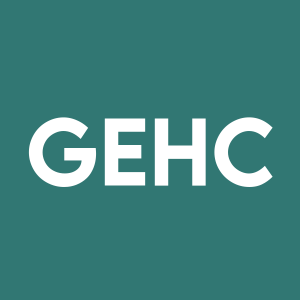Clinical Study Shows Targeted End-tidal Control Anesthesia Delivery Improves Efficiency and Accuracy to Help Optimize Patient Care
- Published in Anesthesia and Analgesia, results from the multi-site trial evaluating End-tidal Control software provide compelling evidence for enhanced accuracy and efficiency of anesthesia delivery compared to conventional anesthetic gas delivery methods.1
- End-tidal Control is the first FDA-approved software that automatically adjusts and maintains exhaled oxygen and exhaled anesthetic concentrations, with more accuracy in reaching the clinician’s target versus manual control. The utilization of End-tidal Control software reduces manual adjustments by clinicians, enabling them to focus on time with their patients.2
- Results support End-tidal Control’s ability to reduce anesthetic agent usage, reducing greenhouse gas emissions and costs, compared to manual control. 1
As healthcare systems continue to face workforce challenges, sicker patients, and increasing costs and administrative demands, the need for efficient care is critical. Automation in anesthesia gas delivery can help reduce manual intervention and cognitive burden for clinicians, while decreasing costs and optimizing patient care.
To ease the way to more efficient care, automated anesthesia gas delivery can also help support low-flow anesthesia —a technique in which anesthetic gas flow is reduced to the lowest level consistent with safe patient care. “In the dynamic surgical environment, the repeated manual adjustment of fresh gas flows and anesthetic vaporizer settings required to deliver low-flow anesthesia can be challenging for anesthesia clinicians. Results from the MASTER trial showed that End-Tidal Control software was able to achieve and sustain desired oxygen and anesthetic agent concentrations more consistently and timely compared to conventional methods,” said Trial Investigator Melinda S. Seering, MD, Clinical Associate Professor of Anesthesia at University of Iowa Healthcare. “As less anesthetic agent is needed to maintain the respective targets, End-tidal Control software can help enhance patient safety in the operating room, while reducing greenhouse gas emissions and costs.”**
The randomized, controlled MASTER trial (Multi-site Anesthesia Randomized Controlled STudy of End Tidal Control Compared to Conventional Anesthesia Results) was conducted across four
Study results showed that the End-tidal Control arm achieved:***
-
Targeted end-tidal anesthetic concentrations within
5% of the set value 98 ±2% of the time, compared to 46 ±32% of the time with manual control (p < 0.0001). -
Targeted end-tidal oxygen concentrations within
5% of the set value 86 ±23% of the time, compared to 41 ±33% of the time with manual control (p < 0.0001). -
Faster response times for achieving
90% of the initial desired end-tidal anesthetic concentration (median 75 seconds), compared to manual control (median 158 seconds) (p=0.0013).
Additionally, results support End-tidal Control’s ability to significantly reduce anesthetic agent usage, reducing greenhouse gas emissions and costs, compared to manual control.**** A separate study also showed a potential
“Anesthesia professionals are focused on patient safety and have a history of utilizing technology to deliver improved clinical outcomes. End-tidal Control enables clinicians to automatically manage adequate oxygen and anesthetic delivery. Clinicians no longer have to continually adjust fresh gas flow and vaporizer settings, freeing up their time to focus on other tasks,” said John Beard, MD, anesthesiologist and Chief Medical Officer of Patient Care Solutions, GE HealthCare. “Results from the MASTER trial reinforce the value of End-tidal Control software in surgical settings to potentially help reduce unnecessary variability in care and meet the unique needs of individual patients.”
GE HealthCare designs anesthesia solutions to support care that can think one step ahead. End-tidal Control software can be used with the Aisys™ CS2 Anesthesia Delivery System to enhance perioperative care. Additionally, the American Medical Association recently approved a new Category III CPT code to help facilities track patient outcomes associated with the use of End-tidal Control software, in addition to its other benefits. For more information, please visit: https://www.gehealthcare.com/products/anesthesia-delivery/aisys-cs2
* End-tidal Control in
** The MASTER trial was funded by GE HealthCare. The views expressed are solely those of Dr. Melinda S. Seering, do not reflect the opinions or beliefs of the University of
*** Median percent deviation from the clinician’s desired end-tidal anesthetic and oxygen targets with End-tidal Control was
**** Studies have shown End-tidal Control can reduce anesthetic agent consumption by over
About GE HealthCare Technologies Inc.
GE HealthCare is a leading global medical technology, pharmaceutical diagnostics, and digital solutions innovator, dedicated to providing integrated solutions, services, and data analytics to make hospitals more efficient, clinicians more effective, therapies more precise, and patients healthier and happier. Serving patients and providers for more than 125 years, GE HealthCare is advancing personalized, connected, and compassionate care, while simplifying the patient’s journey across the care pathway. Together our Imaging, Ultrasound, Patient Care Solutions, and Pharmaceutical Diagnostics businesses help improve patient care from diagnosis, to therapy, to monitoring. We are a
Follow us on LinkedIn, X , Facebook, Instagram, and Insights for the latest news, or visit our website https://www.gehealthcare.com/ for more information.
1 McCabe, M., et al. End-Tidal Control Versus Manual Control of Inhalational Anesthesia Delivery: A Randomized Controlled Noninferiority Trial, Anesthesia & Analgesia 2024.
2 Lucangelo, U., Garufi, G., Marras, E. et al. End-tidal versus manually-controlled low-flow anaesthesia. J Clin Monit Comput 28, 117–121 (2014). https://doi.org/10.1007/s10877-013-9516-8. Also refer to the Et Control User’s Reference Manual (5824844-
3 Tay. S, et al. Financial and environmental costs of manual versus automated control of end-tidal gas concentrations, Anaesthesia Intensive Care 2013; 41: 95-105.
View source version on businesswire.com: https://www.businesswire.com/news/home/20240820714523/en/
GE HealthCare Media Contact:
Jennifer Purdue
M +1 267 593 9735
jennifer.purdue@gehealthcare.com
Source: GE HealthCare







